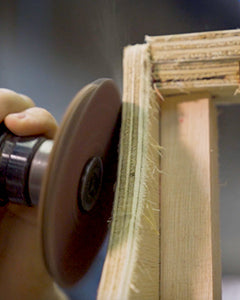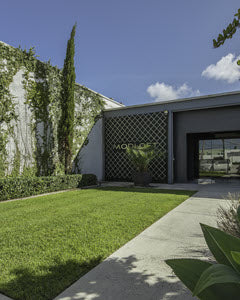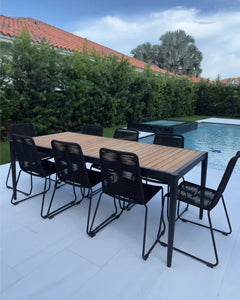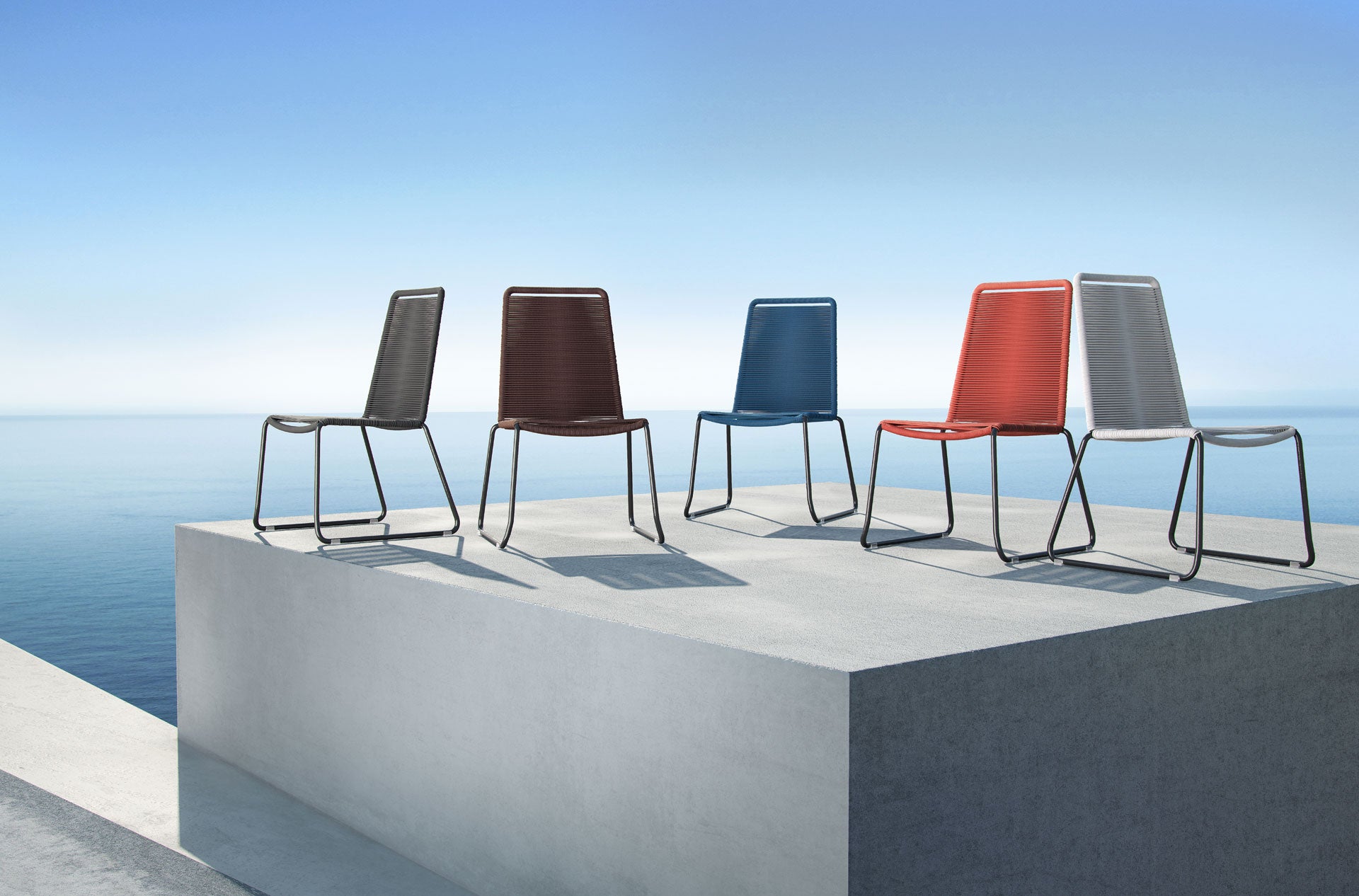Scandinavian interior design—whether you have seen it in stores or read about it online is synonymous with modern minimalism. The interior design of the region is based on simple pieces with clean aesthetics. It also embraces the Danish concept of hygge, which is all about creating cozy, welcoming spaces of contentment.
Establishing a Scandinavian design for your home means following functionality, simplicity, and craftsmanship. Natural materials, particularly pale woods like ash and beech, wool and linen textiles, leather, and glass, are used in the majority of Nordic style designs. While some items feature traditional patterns or brighter color accents, the majority of Scandinavian-style designs are understated and minimalist.
Here at Modloft, we understand the importance of simplicity and functionality. That is why we strive to achieve the ideal approach to complement your interior design aesthetic, and our furniture is expertly crafted to meet your specific requirements.
We've got you covered when it comes to Scandinavian interior design. Here's how you can personalize your home using Scandinavian principles.
What Is Scandinavian Interior Design?
Scandinavian interior design is a minimalistic style that uses a combination of textures and soft colors to make sleek, modern décor feel warm and inviting. It focuses on clean lines, utility, and simple furnishings that are functional, beautiful, and comfortable. This design began in the early 20th century, combining old and new styles from Denmark, Sweden, Iceland, Finland, and Norway.
Scandinavian interior design gained popularity in the United States and Canada in the 1950s. It was also particularly influenced by mid-century modern design, so it features influence from industrialization and Germany's Bauhaus movement's modernist sensibilities.
Scandinavian Design Starts With Minimizing
Scandinavian design features bright and open spaces with plenty of space to move and breathe. Clean lines and white space, for example, evoke a sense of calm and capacity. One of the key factors of achieving this style is one thing—less clutter.
You’ll start by decluttering. You don’t have to dive right into the ultra-minimalist look, though. Instead, aim for lagom, a Swedish term that translates to “in-between” or “just right.”
Just because Scandi style interior strives for a more minimalist approach does not mean you can’t personalize your home with decor and trinkets galore. Add items that remind you of warmth and coziness, such as candles, soft blankets, and slippers, to boost hygge. Personalize the space with items that make you happy.
Natural Light
Scandinavian interior design is known for its clean color palettes, cozy accents, and eye-catching modern furniture. Natural light, which is in high demand in Nordic countries, is frequently used in designs.
Because decoration is limited, functional elements can also be ornamental. One such example is lighting. Lantern-style pendant lights made of linen, paper, or wicker are among the top choices. However, whimsical and colorful contemporary lighting designs and lamps are also present in the most recent Scandinavian decor trends.
Fireplaces in Scandinavian homes are typically found in the corner of a room rather than centered on a wall. As a result, seating arrangements are frequently designed accordingly. Smaller accent chairs float closer to the fireplace, whereas sofas generally anchor the center of the room, leaving walking space behind them.
Scandinavian Style Furniture
Scandinavian furniture is simple and functional. Designers frequently use only solid wood to create Nordic-style chairs, tables, and other furniture items. Leather, linen, and Kvadrat textiles are natural materials that complement wood surfaces. The importance of function in Scandinavian furniture design cannot be overstated. Consider cleverly concealed storage, modular shelving, or adaptable designs.
Choose Neutral Colors (With a Pop of Flair!)
When it comes to color, mimic nature's palette. Try incorporating stone, wood, and earthy tones. A simple neutral color scheme is perfectly sophisticated, and using lighter versions of the wall color, as well as light wood, adds lightness.
Choose grayish blues, green plants, warm tans, neutral color versions, monochromatic color stories, and graphic and botanical prints for larger blocks of accent color. Bright and bold colors are welcomed infusions of joy with smaller accents.
Add Contrast
High contrasts are a huge staple in Scandinavian design. For larger blocks of an accent color, choose grayish blues, green plants, warm tans, neutral color versions, monochromatic color stories, and graphic and botanical prints—and color is allowed.
Contrast light and dark neutrals, old and new pieces, abstract and natural, straight and wavy, neutral and flashes of color, hard and soft, utility and coziness instead of colors.
Natural Elements & Textures
Because natural resources were scarce in Scandinavian countries historically, Scandinavians have a distinct and hard-earned appreciation for nature. To get the most out of what nature had to offer, people had to learn to work with it, to understand and respect it.
Natural elements, like light wood, indoor plants, and natural textiles, such as mohair, wool, sheepskin, jute, and burlap, can be used to honor nature as a Scandinavian design. They not only create a sense of coziness, but they also add another layer of visual interest to the space.
Our final design tip is layered textures to soften the look and add interest. To be more specific, incorporate textured blankets, cushions, and rugs whenever possible.
Scandinavian wall decor frequently depicts or alludes to nature or the human form, whether it's a line drawing or an abstract watercolor. You can display your favorite monochrome artwork alone, as part of a series, or as part of a larger arrangement.
Designing Your Home Scandinavian Style
Now that you have a better idea of what goes into a Scandinavian-style design, let’s focus on how you can bring a Scandi approach to each room of your home.
Here is a guide on what to consider for a Scandinavian interior for each room.
A Scandinavian Living Room
When decorating your living room in a Scandinavian style, the main focus is to create a warm, inviting, and comforting space. Add some soft, warm pattern textures when considering furniture and accents.
The idea is to keep it clean and simple, but the textures in the room have to keep it from feeling stark or clinical.
A Scandinavian Bedroom
The very limited palette is one of the first things you notice about Scandi décor. White dominates, with touches of gray, black, pale blue, or pastels filling in the gaps.
Wood is a Scandi staple, and not only on the floors. You can also have wood-like wall art as well as furniture to give it that rustic Scandinavian style.
A Scandinavian Bathroom
Simplicity, utility, and beauty are all hallmarks of the look that serve up clean lines often punctuated by natural materials, neutral colors, and personal accents.
If you are trying to achieve a Nordic-inspired bathroom, use faux wood planks made of peel and stick vinyl. Natural greenery is one of the best ways to add a little Scandi style to any room in a home.
A Scandinavian Kitchen & Dining Room
A Scandinavian kitchen and dining room are mainly inspired by a minimalist aesthetic, but that doesn’t mean you can’t make it your own. It is ideal for small spaces and those who seek a casual environment in their home.
When it comes to this, creating a Scandinavian-inspired cooking space usually entails layering on warm wood accents in the form of cabinetry and flooring and pale paint colors.
Final Thoughts
Scandinavian interiors are the epitome of simplicity and comfort, encapsulating the concept of hygge in all its glory. Plush surfaces, warm textiles, simple patterns, natural materials, an open-plan, and airy spaces contribute to a more comfortable feeling.
At the same time, Nordic-style living rooms are simply stunning. Scandinavian design homes are refined and cozy, but they are also timeless, and they become the ideal setting for living well and slowly.
Traditional Scandinavian interior design has evolved over time to reflect changes in culture and tastes, as well as interaction with other ways of doing things. Some newer trends, such as worn leather, white paper lantern lights, plank-style floating shelves, monochrome art, and black and white stripes, work well within the traditional aesthetic.
At Modloft, our main goal is to achieve refined and cozy aesthetics that suit your home. This is why our furniture is inspired by Scandi style interior design.
Sources:
What is Scandinavian Design?| The Spruce
Meet Hygge: The New Trend That Will Boost Your Mood | Better Homes & Garden
Scandinavian-Inspired Furniture For A Minimalist But Cozy Home | Brit.co








